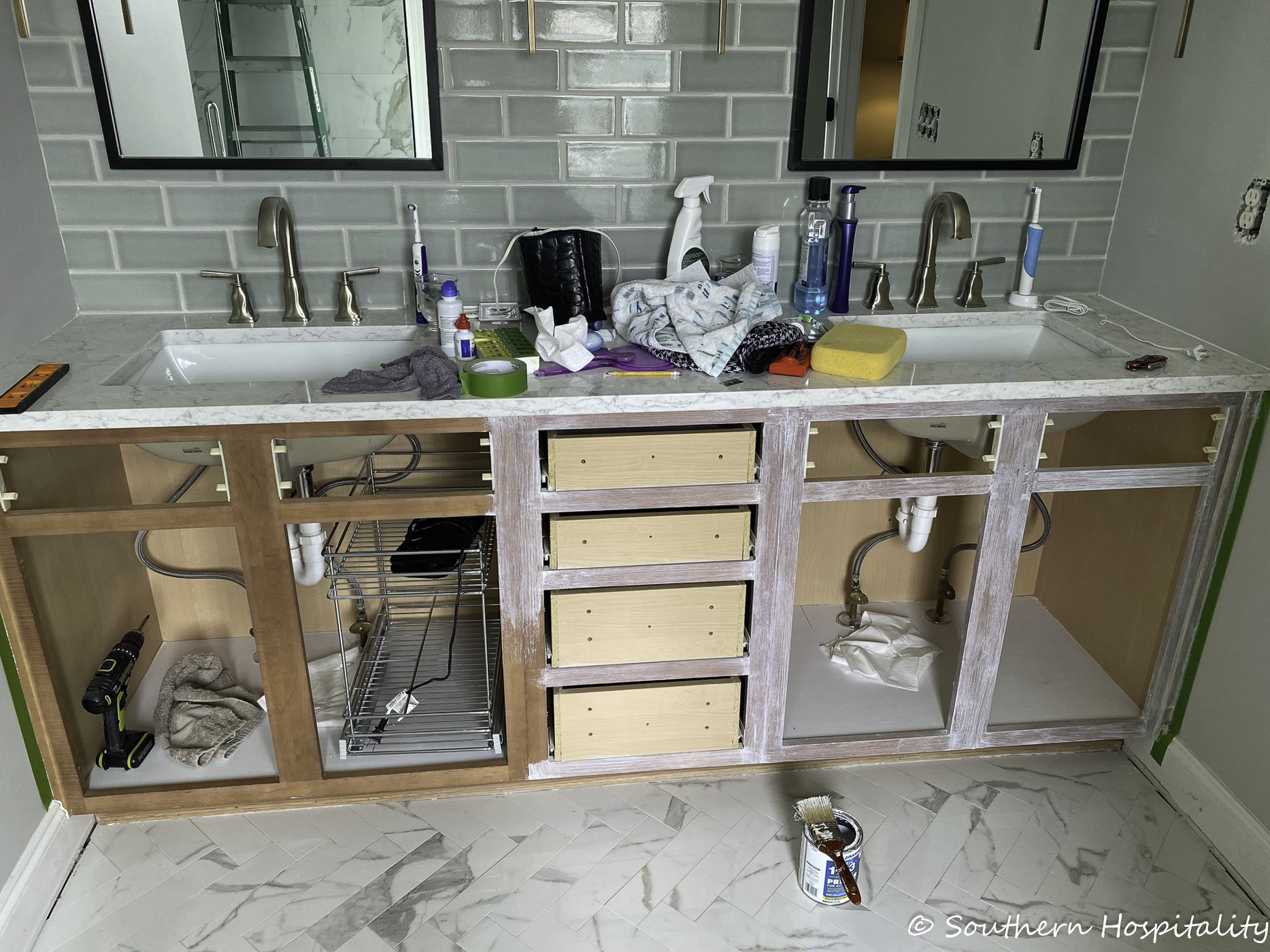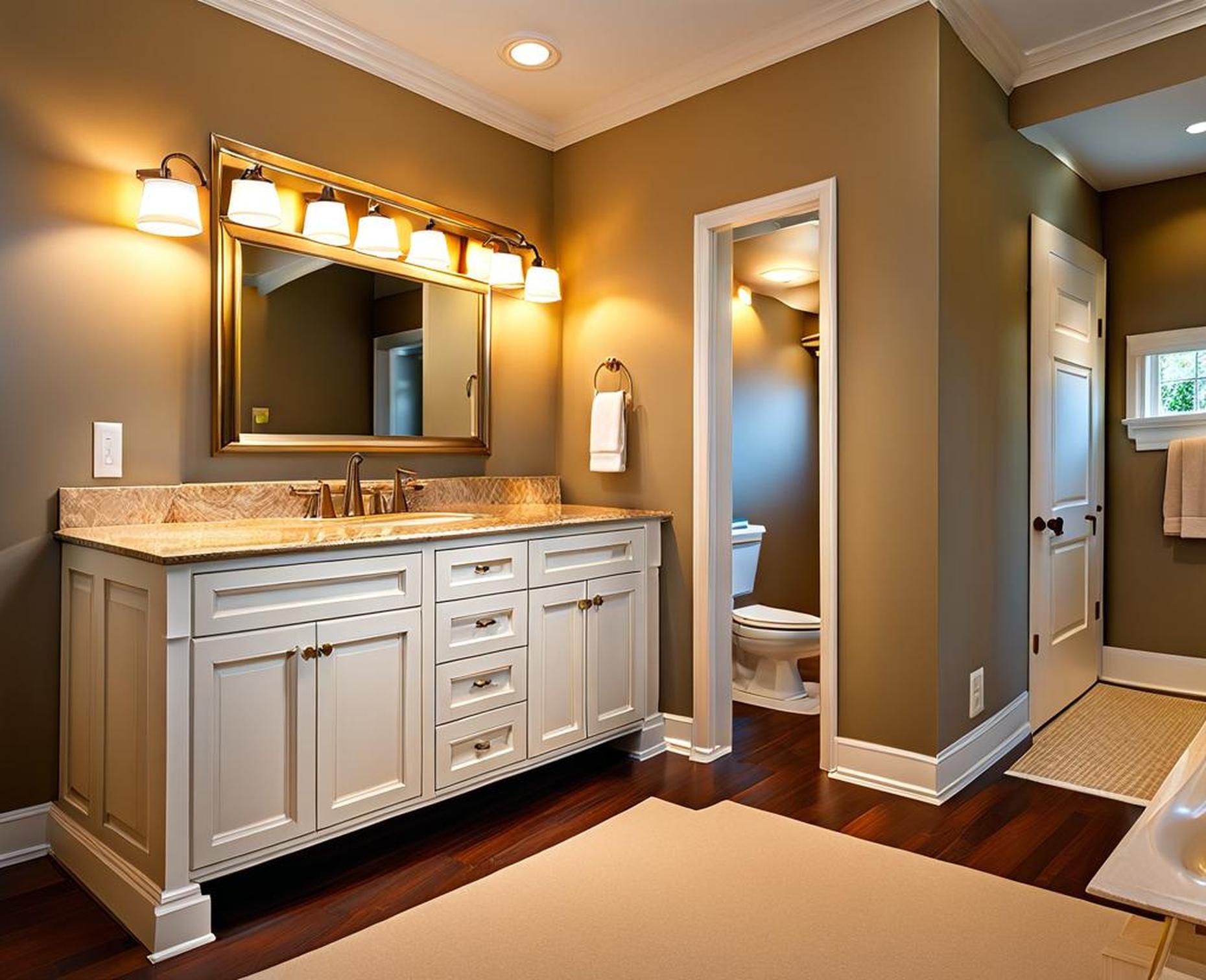Understanding the Vanity Top and its Components

The vanity top is the heart of your bathroom, offering both functionality and style. Understanding its components and construction is crucial for a successful removal and replacement project. This section will guide you through the different types of vanity tops, their construction, and the key components you’ll encounter.
Types of Vanity Tops
Vanity tops are available in a wide range of materials, each offering unique advantages and aesthetic appeal.
- Solid Surface: These tops are typically made from a non-porous material like acrylic, polyester, or a blend of both. They are known for their durability, scratch resistance, and ease of cleaning. Popular brands include Corian and Avonite.
- Natural Stone: Marble, granite, and quartz are popular choices for vanity tops, offering a luxurious look and high durability. They come in various colors and patterns, making them highly customizable.
- Ceramic Tile: A budget-friendly option, ceramic tile vanity tops are durable and versatile. They can be laid in various patterns and designs, offering a wide range of aesthetic possibilities.
- Laminate: Laminate tops are an affordable option that mimics the look of natural stone or solid surface. They are generally less durable than other options but are easy to clean and maintain.
Vanity Top Components
A typical vanity top consists of several essential components:
- Sink: The sink is the primary feature of the vanity top, providing a place for washing hands and face. Sinks come in various materials, including porcelain, ceramic, stainless steel, and composite.
- Countertop: The countertop is the surface surrounding the sink, providing a workspace for toiletries and other bathroom essentials.
- Backsplash: The backsplash is a vertical surface behind the sink that protects the wall from splashes and spills. It can be made from the same material as the countertop or a different material for a contrasting look.
- Mounting Hardware: The vanity top is secured to the vanity cabinet using mounting hardware, typically consisting of brackets or clips.
Preparation and Safety Precautions: How To Remove A Bathroom Vanity Top

Before embarking on the task of removing your bathroom vanity top, it is crucial to ensure a safe and organized workspace. Just as a skilled carpenter meticulously prepares their tools and workspace before crafting a masterpiece, so too must you prepare for this task.
Tools and Materials
A well-equipped toolbox is essential for any DIY project. Here is a list of tools and materials you will need for removing your bathroom vanity top:
- Safety Glasses: Protecting your eyes is paramount. Safety glasses will shield your eyes from flying debris during the removal process.
- Work Gloves: Wearing work gloves will protect your hands from sharp edges and potential cuts.
- Adjustable Wrench: This versatile tool will be needed for disconnecting the water supply to the vanity.
- Channel-Lock Pliers: These pliers will come in handy for gripping and turning nuts and bolts that are difficult to access with an adjustable wrench.
- Screwdriver Set: You will need a variety of screwdrivers, both Phillips and flathead, to remove screws securing the vanity top and sink.
- Utility Knife: A utility knife will be helpful for cutting through any sealant or adhesive holding the vanity top in place.
- Bucket: A bucket will be used to collect any water that may leak out during the water supply disconnection.
- Towels: Towels will be needed to absorb any water spills and protect the surrounding area from damage.
- Drop Cloth: A drop cloth will protect your floor from scratches and debris during the removal process.
Safety Precautions
Safety is paramount during any home improvement project. Here are some essential safety precautions to follow:
- Wear Protective Gear: Always wear safety glasses and work gloves to protect your eyes and hands from potential hazards.
- Disconnect Water Supply: Before attempting to remove the vanity top, turn off the water supply to the vanity at the shut-off valve. This will prevent water from flooding the bathroom.
- Secure the Vanity: Ensure the vanity is stable and secure before attempting to remove the top. If necessary, use a helper to hold the vanity steady while you work.
Preparing the Area, How to remove a bathroom vanity top
A well-prepared workspace facilitates a smooth and efficient removal process. Here’s a step-by-step guide on preparing the area around the vanity:
- Clear the Area: Remove any items from the vanity top and surrounding area to provide ample space for working.
- Protect the Floor: Lay down a drop cloth to protect the floor from scratches, spills, and debris.
- Remove the Mirror: If the vanity has a mirror, carefully remove it from the wall.
- Access the Water Supply: Locate the shut-off valve for the vanity’s water supply. It is typically located near the vanity or under the sink.
- Turn Off the Water Supply: Turn off the water supply valve to the vanity.
- Drain the Water: Turn on the faucet for a few seconds to drain any remaining water from the pipes.
- Disconnect the Drain Pipe: If the vanity has a drain pipe connected to the top, carefully disconnect it from the sink or drain.
Steps for Removing the Vanity Top
Now that you have gathered the necessary tools and taken the necessary precautions, it’s time to embark on the process of removing the vanity top. This is the core of the project, and it requires a combination of careful technique and a touch of patience. Remember, each step is a stepping stone toward a successful outcome.
Disconnecting the Sink from the Plumbing System
This step involves disconnecting the sink from the water supply lines and the drainpipe. This will allow you to lift the vanity top without damaging the plumbing system. Here’s a breakdown of the process:
- Turn off the water supply valves to the sink. These are typically located under the sink or on the wall behind it.
- Open the faucet to release any remaining water pressure in the lines.
- Use a wrench to loosen and disconnect the water supply lines from the sink.
- Disconnect the drainpipe from the sink. This may involve loosening a nut or a coupling.
- Carefully remove the sink from the vanity top, ensuring you don’t damage the countertop or the sink itself.
Detaching the Vanity Top from the Cabinet
The next step is to detach the vanity top from the cabinet. This is where you’ll need to determine how the top is attached. Common methods include screws, clips, or adhesive.
- Screws: If the vanity top is secured with screws, locate the screws along the edges of the countertop or underneath the sink. Use a screwdriver to remove the screws.
- Clips: If the vanity top is held in place by clips, locate the clips along the edges of the countertop. You may need to use a flathead screwdriver or a prying tool to release the clips.
- Adhesive: If the vanity top is attached with adhesive, you’ll need to carefully separate the countertop from the cabinet. Use a utility knife or a heat gun to soften the adhesive and make it easier to remove. This method requires extra caution to avoid damaging the cabinet or the countertop.
Lifting and Removing the Vanity Top
Once you’ve detached the vanity top from the cabinet, you’re ready to lift it off. Remember, the vanity top can be heavy, so it’s crucial to use proper lifting techniques to avoid injury.
“Lift with your legs, not your back.”
- Have a helper to assist you in lifting the vanity top. This will ensure a safe and controlled lift.
- Position yourself close to the vanity top, with your feet shoulder-width apart.
- Bend your knees and keep your back straight as you lift the vanity top. Use your legs to generate the power, not your back.
- Lift the vanity top slowly and steadily, maintaining a firm grip.
- Carefully move the vanity top to its desired location, avoiding any obstacles or sharp edges.
